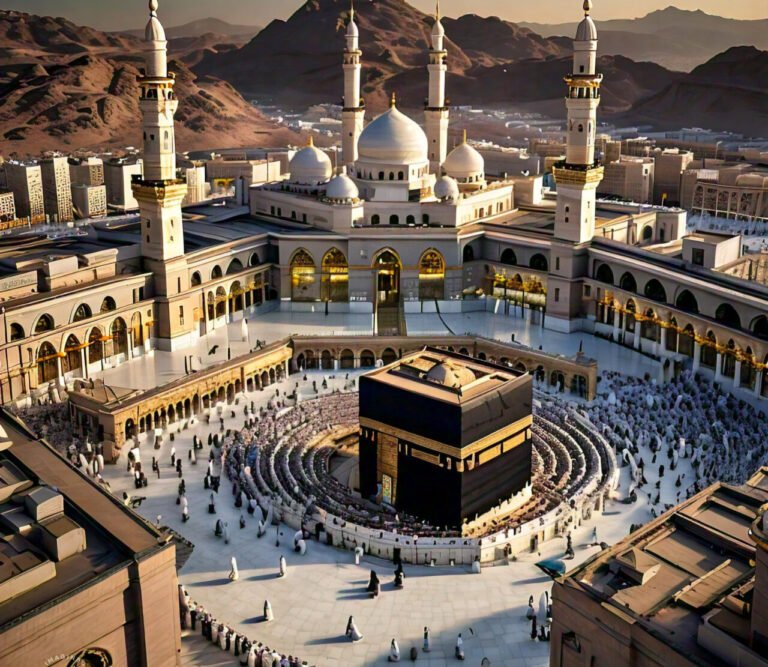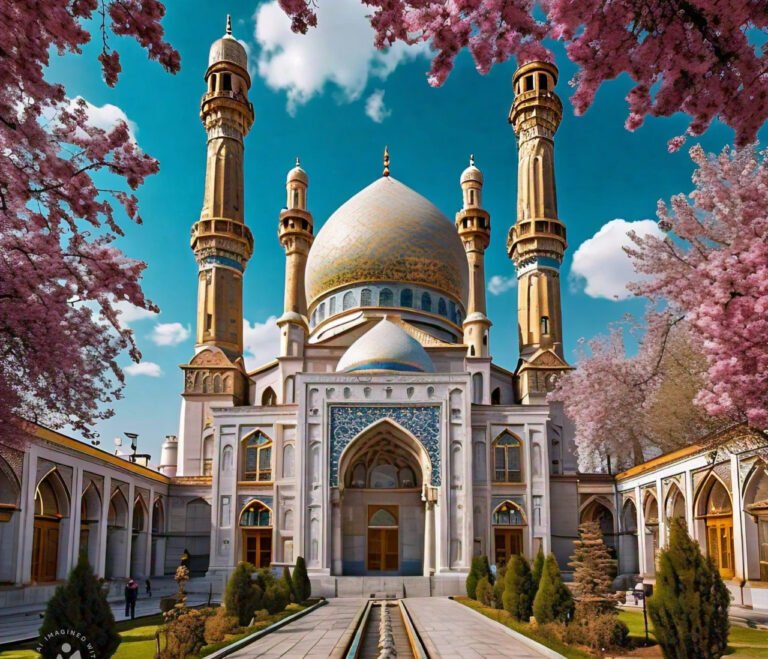Exploring Historical Pilgrimage Destinations: A Journey Through Time and Spirituality
In the journey of life, some destinations are more than just geographical locations. They are places that embody centuries of devotion, faith, and spirituality. These sacred places, known as Historical Pilgrimage Destinations, are not only significant for their religious and historical value but also as pathways to spiritual enlightenment and peace. Pilgrims from all over the world travel to these places, seeking to deepen their connection with their faith and history. In this article, we will explore some of the most renowned Historical Pilgrimage Destinations worldwide, each offering a unique spiritual experience.
Makkah Mukarramah: The Heart of Islamic Pilgrimage
When discussing Historical Pilgrimage Destinations, Makkah Mukarramah, or Mecca, holds an unmatched position for Muslims. Located in Saudi Arabia, Mecca is the destination for millions of Muslims who embark on the Hajj and Umrah pilgrimages annually. The Kaaba, a cubic structure located at the center of the Masjid al-Haram mosque, is the holiest site in Islam and the Qibla (direction) towards which all Muslims pray.
Hajj, one of the Five Pillars of Islam, is a mandatory pilgrimage for Muslims who are physically and financially able to undertake the journey. It is not merely an act of worship but also a profound spiritual experience that allows pilgrims to feel a closer connection to Allah. The significance of Mecca lies not only in its centrality to Islamic worship but also in its rich history, with landmarks such as the Cave of Hira, where Prophet Muhammad (PBUH) received his first revelation. Mecca is undoubtedly one of the greatest Historical Pilgrimage Destinations in the world.
Jerusalem: A Sacred City for Three Major Religions
Jerusalem, a city that sits at the crossroads of three major religions – Islam, Christianity, and Judaism – is a central Historical Pilgrimage Destination for millions. Its historical and spiritual significance cannot be overstated, as it is home to religious landmarks revered by followers of all three faiths.
For Muslims, Jerusalem houses the Al-Aqsa Mosque, the third holiest site in Islam, from where Prophet Muhammad (PBUH) is believed to have ascended to heaven during the Isra and Mi’raj journey. For Jews, the Western Wall, a remnant of the ancient Temple of Solomon, holds immense religious value. Christians view the city as the site of many significant events in the life of Jesus Christ, including his crucifixion and resurrection. The Church of the Holy Sepulchre is particularly revered by Christians as the site of Jesus’ tomb.
Jerusalem’s blend of religious and historical significance makes it a unique and deeply spiritual Historical Pilgrimage Destination for people of various faiths.
Varanasi: The Eternal City of Hinduism
Located on the banks of the Ganges River in India, Varanasi is one of the most sacred cities in Hinduism. Known as the “City of Light,” Varanasi is believed to be one of the oldest continuously inhabited cities in the world. Hindus believe that bathing in the sacred waters of the Ganges in Varanasi purifies the soul and washes away sins, making it a central Historical Pilgrimage Destination for millions of devotees.
The Kashi Vishwanath Temple, dedicated to Lord Shiva, is the most famous temple in Varanasi and draws pilgrims from across the globe. The city is also a hub of religious rituals, cremation rites, and festivals, making it a living embodiment of Hindu spiritual traditions. Varanasi’s ancient history and deep spiritual roots make it one of the world’s foremost Historical Pilgrimage Destinations.
Vatican City: The Heart of Roman Catholicism
Vatican City, located in the heart of Rome, Italy, is not only the smallest country in the world but also the spiritual center of Roman Catholicism. As the home of the Pope and the headquarters of the Roman Catholic Church, Vatican City is one of the most significant Historical Pilgrimage Destinations for Christians, particularly Roman Catholics.
St. Peter’s Basilica, an architectural masterpiece and one of the largest churches in the world, is built on the site where Saint Peter, one of Jesus Christ’s apostles, is believed to be buried. The Vatican Museums, which house an extensive collection of Christian art and relics, also attract millions of visitors annually. Pilgrims visit Vatican City to attend masses led by the Pope, seek blessings, and connect with centuries of Christian history.
Amritsar: The Spiritual Center of Sikhism
Amritsar, located in the Indian state of Punjab, is the spiritual heart of Sikhism. The Golden Temple, also known as Harmandir Sahib, is the most sacred shrine for Sikhs. Covered in gold, the temple stands in the middle of a large lake, symbolizing purity and the eternal presence of the divine.
The Golden Temple is open to people of all faiths, embodying the Sikh belief in universal brotherhood and equality. Pilgrims visit the temple to listen to the hymns of Gurbani, meditate, and partake in the Langar (community kitchen), where free meals are served to everyone, regardless of religion or social status. Amritsar’s rich Sikh heritage and spiritual significance make it one of the most revered Historical Pilgrimage Destinations in the world.
Bodh Gaya: The Site of Buddha’s Enlightenment
Bodh Gaya, located in the Indian state of Bihar, is one of the most important pilgrimage sites for Buddhists. It is here, under the Bodhi Tree, that Siddhartha Gautama attained enlightenment and became the Buddha. The Mahabodhi Temple, a UNESCO World Heritage Site, stands at the location of the Bodhi Tree and attracts thousands of pilgrims each year.
For Buddhists, Bodh Gaya represents the ultimate destination for spiritual growth and understanding. The serene environment and the profound historical and religious significance of the site make Bodh Gaya one of the world’s most cherished Historical Pilgrimage Destinations.
Karbala: In Memory of the Martyrs of Karbala
Karbala, located in Iraq, is a place of profound spiritual significance for Shia Muslims. It is the site of the Battle of Karbala, where Imam Hussain (A.S.), the grandson of Prophet Muhammad (PBUH), and his companions were martyred in their stand against tyranny and injustice. The shrine of Imam Hussain (A.S.) in Karbala is one of the most important Historical Pilgrimage Destinations for Shia Muslims.
Every year, millions of pilgrims visit Karbala, especially during Arbaeen, to commemorate the martyrdom of Imam Hussain (A.S.) and reflect on the themes of sacrifice, justice, and truth. Karbala’s historical and spiritual significance continues to inspire devotion and reverence among Muslims worldwide.
Lumbini: The Birthplace of Gautam Buddha
Lumbini, located in modern-day Nepal, is the birthplace of Gautam Buddha and is considered one of the most sacred pilgrimage sites in Buddhism. The Maya Devi Temple, which marks the exact spot where Buddha was born, and the surrounding Bodhi Tree are key landmarks in this Historical Pilgrimage Destination.
Designated as a UNESCO World Heritage Site, Lumbini attracts pilgrims and visitors from all over the world, seeking to connect with the roots of Buddhism and reflect on the teachings of the Buddha. The peaceful atmosphere and rich history of Lumbini make it a profound spiritual destination.
Mashhad: The Shrine of Imam Reza
Mashhad, located in northeastern Iran, is the site of the shrine of Imam Reza (A.S.), the eighth Imam of Shia Islam. It is one of the most significant pilgrimage sites for Shia Muslims. The shrine complex is not only an architectural marvel but also a center of spiritual reflection and prayer.
Pilgrims visit Mashhad to seek blessings and pay their respects to Imam Reza (A.S.), whose teachings continue to inspire Shia Muslims. The historical and spiritual importance of Mashhad makes it a vital part of the Historical Pilgrimage Destinations of the Islamic world.
Canterbury: A Christian Pilgrimage Site in England
Canterbury, a city in southeastern England, holds immense significance for Christians, especially within the Anglican Church. The Canterbury Cathedral, one of the oldest and most famous Christian structures, is the site where Archbishop Thomas Becket was martyred in 1170. His death led to Canterbury becoming a major pilgrimage site in medieval Europe.
Today, pilgrims continue to visit Canterbury to pay homage to Thomas Becket and explore the rich Christian history of the cathedral and the surrounding city. Canterbury’s enduring spiritual and historical significance cements its place among the world’s Historical Pilgrimage Destinations.
Conclusion
Historical Pilgrimage Destinations are more than just places of worship; they are symbols of faith, devotion, and the enduring human quest for spiritual fulfillment. Each of these sites offers a unique blend of history, religion, and spirituality, drawing millions of pilgrims seeking to connect with their faith and find inner peace. These destinations are a testament to the rich cultural and religious heritage of humanity, offering both a glimpse into the past and a pathway to spiritual enlightenment.
Last Update: October 23, 2024





